
Nestled in the chaotic, commercial hub of Nehru Place, is an office that possibly hosts the Capital’s healthiest working environment in a city that has gained notoriety for being the most polluted in the world. This building manufactures its own air that is allegedly of 'mountain-fresh' quality and free of any toxins.
Established in 1990, the Paharpur Business Centre has an unremarkable exterior: tall, greyish-white with rectangular windows spread over 50,000 square feet and six floors. But step inside and the multitude of money plants that fill your vision are the first sign that this is no ordinary edifice.
These plants, along with areca palms and snake plants are placed everywhere: “there are over 1,200 plants, or four to every employee on an average – the number of plants it takes to supply quality breathing air for one person,” says Kamal Meattle, the CEO of Paharpur Business Centre (PBC). He quotes a World Health Organisation statistic that has found indoor air to be the second-biggest killer after blood pressure in India, claiming over 1.3 million lives every year.
The air inside the disconcertingly quiet building smells slightly medicinal and is completely still. It is only after some time that you realize why: the gentle breeze and general hum of air conditioning units that are present in other offices or homes are missing here.
“Air conditioners are only switched on over the weekend to give the plants some rest,” says Meattle who was diagnosed with decreasing lung capacity back in 1992. Otherwise, the air that flows throughout the building is cultivated in a fascinating system set up on PBC’s roof: outside air passes through a scrubber that washes it with water to rid it of outside pollutants. This air is then circulated through a greenhouse that holds many plants (areca palm, snake plant and money plants) to eradicate formaldehyde, benzene, carbon monoxide and bacteria. The plants are ingeniously placed everywhere to allow as many as possible in the greenhouse: aside from the pots that jostle for space, they curl downwards from the ceiling, and stretch across the walls from layers of plastic bottles. These plants are cultivated using hydroponics — a method to grow plants using mineral nutrient solutions without soil. This, according to Meattle, heightens their oxygen-producing capabilities, and extends their life span.
A glimpse inside PBC's greenhouse
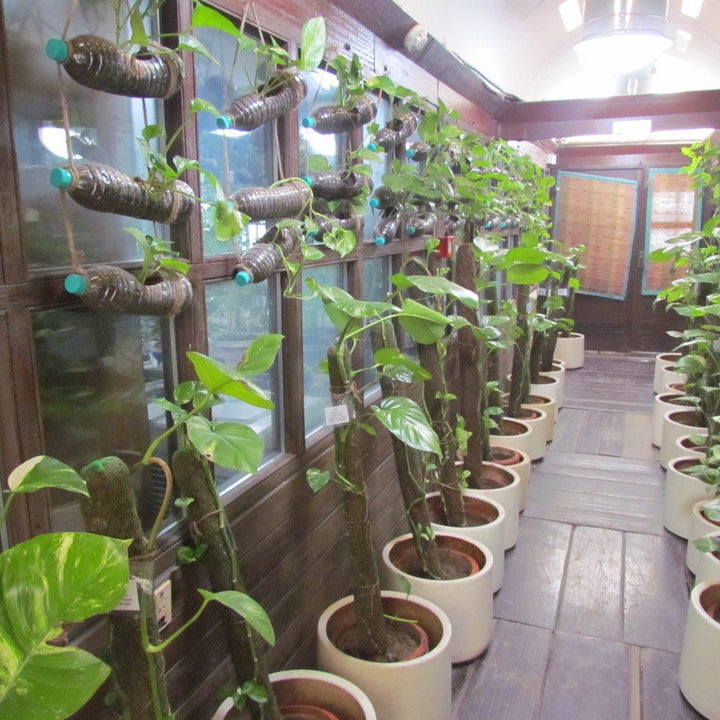
Meattle was advised to leave Delhi by doctors, but instead chose to fight the odds and started cultivating his own air. He discovered the properties of these three plants to clean the air, and combined his findings with some NASA-inspired results to develop and implement his plant policy in his home, and then in PBC.
“The snake plant, according to NASA, is one of the best for improving air quality as it absorbs toxins such as nitrogen oxides and formaldehyde,” says Meattle whose lung capacity is almost back to normal today. He also explains that the areca palm converts carbon dioxide into oxygen, instead of the other way around, while the money plant removes certain pollutants from the air, and should be planted in every home.
The worldwide permissible parameters for pollutants CO2, Particulate Matter 10 and PM 2.5 for indoor air are 700 parts per million over ambient, 50 micrograms per cubic metre and 15 micrograms per cubic metre, says Meattle.
Even though the plants around the office command most of the attention, other subtle measures to render the building energy-efficient slowly become apparent: LEDs have replaced ordinary bulbs, and narrow rooms feature old-fashioned teak wood and carpeting that are allegedly low in VOC (volatile organic compounds) emissions. Light-reflecting paint has been used on the outside to reduce the heat gain to the building. White jute nets covering the windows also help in keeping out the heat ('white is green' is the PBC staff's adopted motto).
The building's restaurant, Café Einstein employs only organic produce and uses induction heaters to keep the food warm instead of candle burners that are comparatively more toxic. “The restaurant’s hygiene and fungal levels are lower than any hospital in India, and I confidently invite any doctor to perform medical surgeries in here without any risk of infection,” says Meattle.
Café Enstein, PBC's restaurant features organic food, and is clean enough to perform a surgery in!
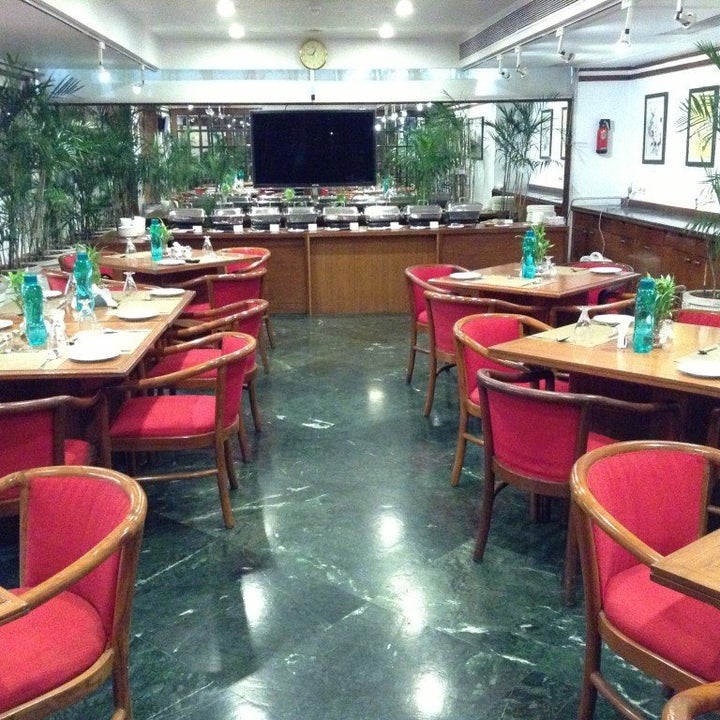
The hall, the restaurant and different areas of the office feature monitors that display the air quality and pollution levels at all hours. Employees are also asked to record their blood oxygen levels every single day – “our records show that this is likely to rise by one per cent after spending 8-10 hours in the building,” says Barun Aggarwal, who joined hands with Meattle to establish Breathe Easy, a service that helps companies implement solutions for improving indoor air quality while reducing energy consumption.
Kamal Meattle and Barun Aggarwal with their natural air purifiers in the PBC greenhouse
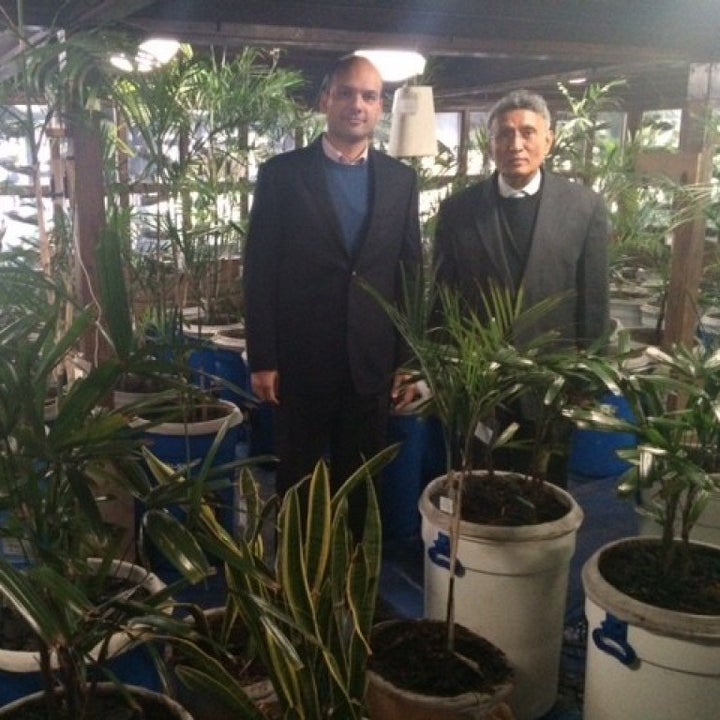
As a result of better oxygen levels, PBC’s occupants have allegedly shown the following results in a two-year study conducted by Chittranjan National Cancer Institute and the Central Pollution Board as compared to non-smokers employed elsewhere in 2008: while productivity levels are up by 20 per cent, health issues have gone down: eye irritation by 52 per cent, respiratory symptoms by 34 per cent, headaches by 24 per cent, lung impairment by 12 per cent and asthma by 9 per cent.
An employee's blood oxygen level being measured
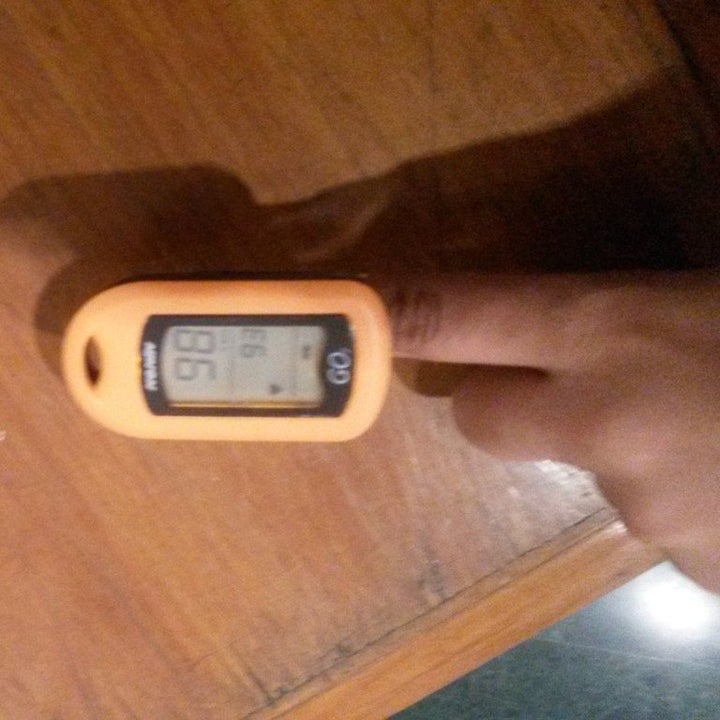
Finally, Meattle has also converted what was a slum area outside the building into a green park, ‘Nehru Place Greens’, spread over 3.3 acres with over 2,000 trees that not only holds a visual appeal but minimises the entire area's carbon footprint.
While PBC's employees continue to benefit from its excellent air, Meattle and Aggarwal are currently working on projects that will allow them to lower their indoor-air services to more affordable prices for Delhi’s masses. Even though it seems implausible to fill office spaces up with several plants (there are companies that offer alternate solutions to purifying indoor air), Meattle and Aggarwal plod on: they have supplied their service to over 750 homes across India, including the US American Embassy School, and the French Embassy School in Delhi, and hope that many buildings and homes will benefit from their research and findings to provide fresh, clean air and extend the lifespan of the next generation.
Here's a look at the building and it's interiors.
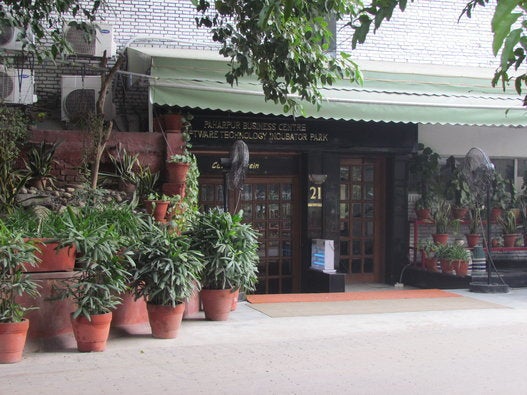
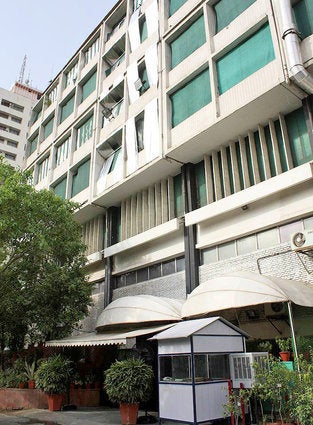
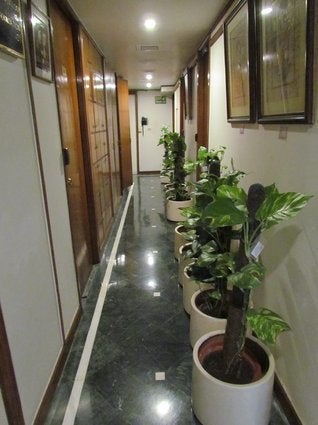
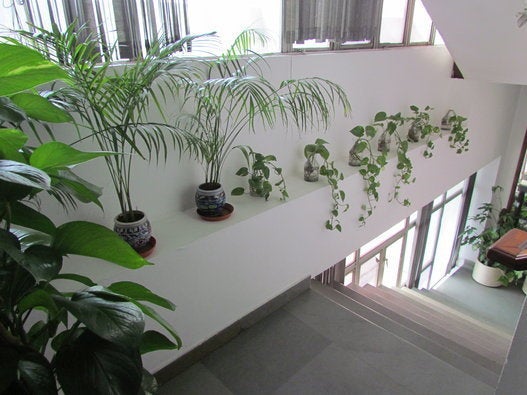
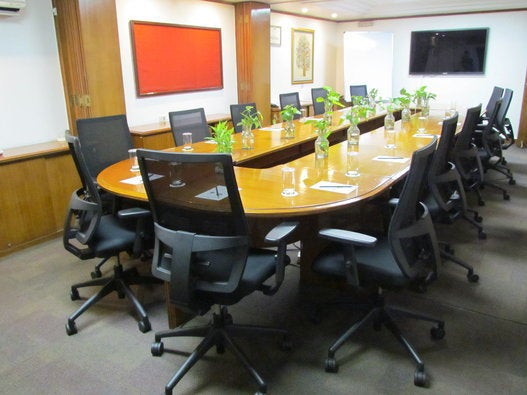
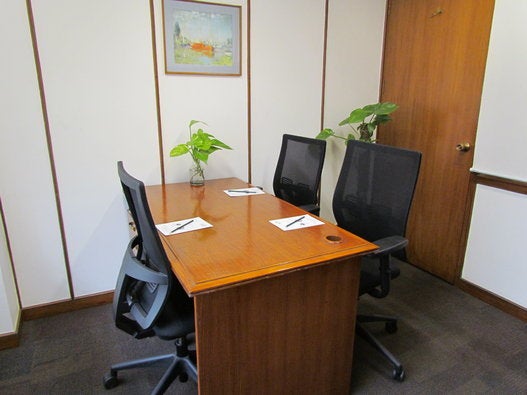
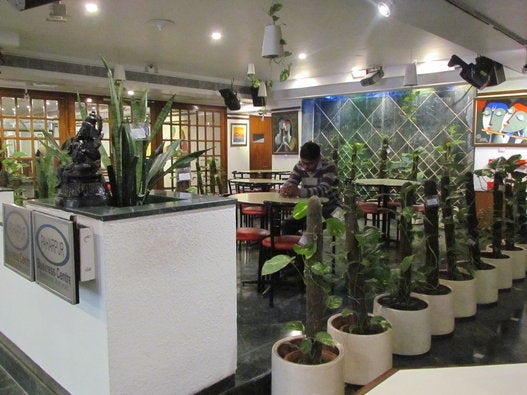
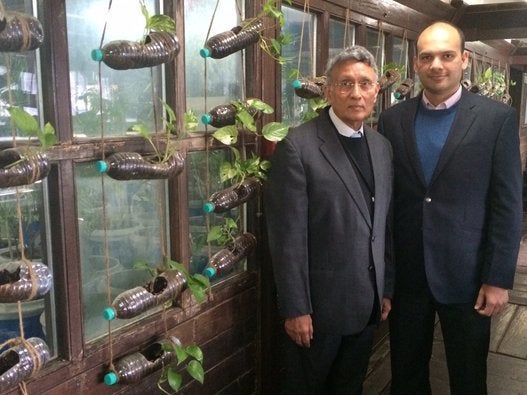
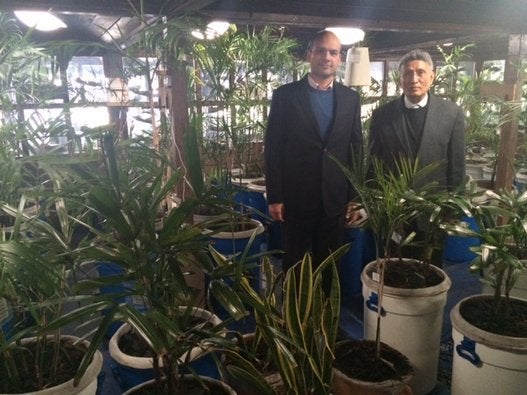
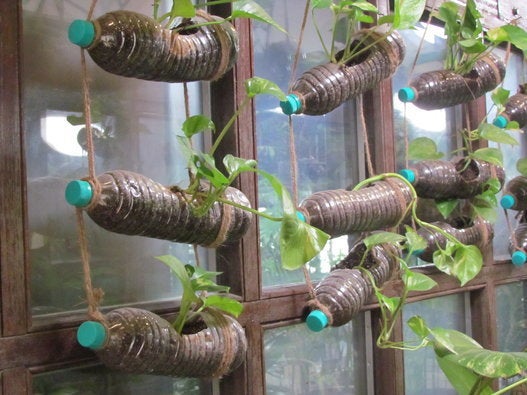
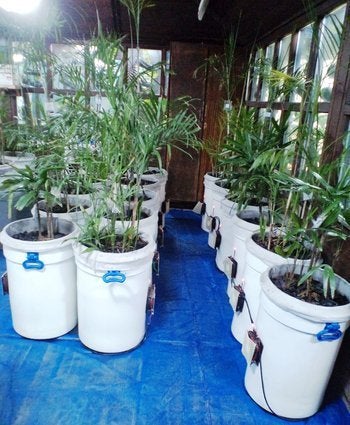
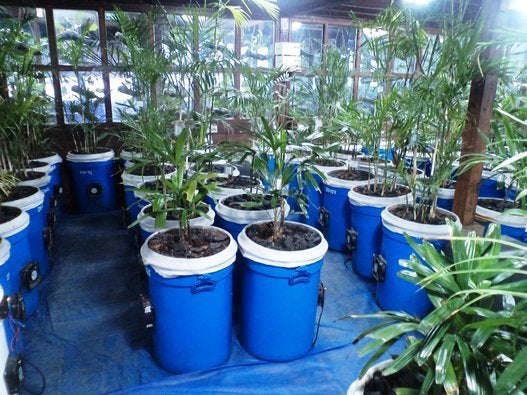
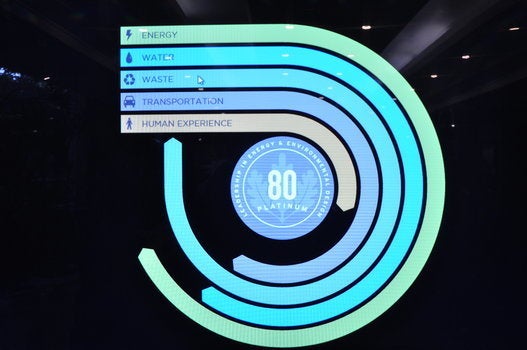
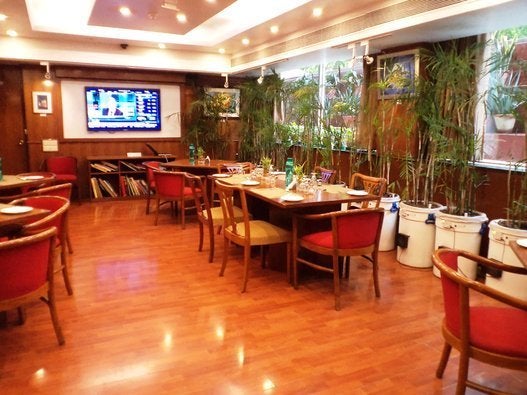

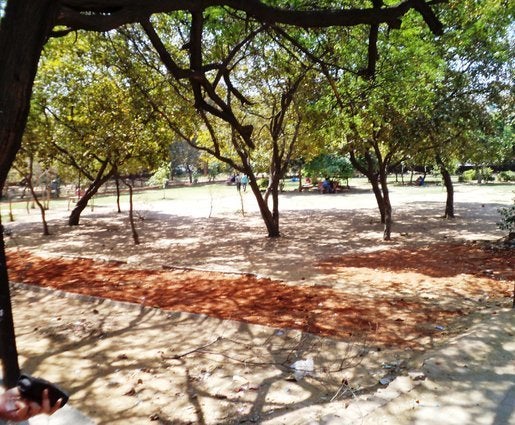
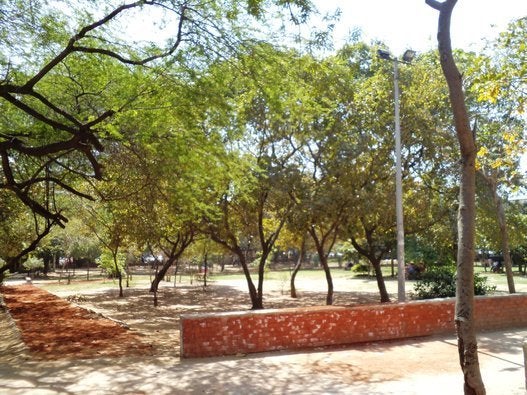



Contact HuffPost India